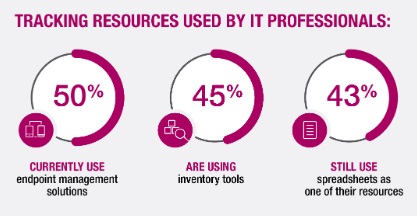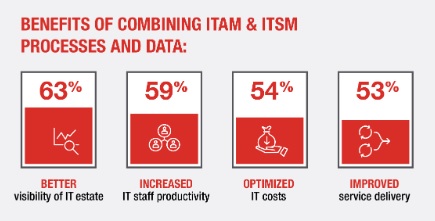
The tech world may be falling in love with artificial intelligence and automation, but when it comes to managing critical assets, old school tools like spreadsheets are still in common use. A new survey by Ivanti illustrates how these legacy tools are forcing IT to waste valuable time analyzing assets due to incomplete data.
Global survey findings from over 1,600 IT professionals also highlighted the need to better integrate service and asset management functions in order to develop and manage assets far more efficiently from provisioning of a new asset through their entire lifecycle. Integration will also help to prevent performance and service glitches occurring due to inadequate asset tracking.
Key findings of the survey are:
■ 43% of IT professionals still track IT assets in spreadsheets
■ 56% do not manage the complete asset lifecycle
■ Nearly 25% reported spending hours per week reconciling inventory and assets
■ 28% reported spending hours supporting out-of-warranty/out-of-support assets
■ 22% replace a device when a user reports an incident or problem

Incomplete Asset Data Wasting IT Time and Budgets
If you own a vehicle, why would you spend valuable time fixing a mechanical issue still covered under warranty? That is one of the questions prompted by the survey which found 50% of IT professionals reported having worked on assets that were actually still under warranty.
Conversely, hours were being spent servicing out-of-warranty assets getting closer to end of support — prolonging use of assets that could no longer contribute to peak performance and could pose security risks.
When asked if they incorporate and monitor purchase data, contracts and/or warranty data as part of their IT asset management program, over 60% of IT professionals said they were missing some key information in their IT asset management program.
Asset and Service Integration is Key to Improvement
The survey reinforces the need for IT Service Management (ITSM) and IT Asset Management (ITAM) to integrate more closely to stop costly inefficiencies caused by incomplete asset data. Particularly in the current environment of increasing security and compliance regulations, using out-of-warranty or out-of-date assets that cannot be patched correctly can expose an organization to costly fines.
Regarding automation, efficient ITSM and ITAM teams are using automated processes to bring asset management into the 21st century and get rid of those spreadsheets! By having one integrated repository of data on an asset and knowing warranty and end-of-service issues for all assets, an organization can avoid costly compliance and/or performance issues.
Survey respondents are hoping to get these benefits from integration:
■ Better visibility of their IT estate: 63%
■ Increased IT staff productivity: 59%
■ Optimized costs: 54%
■ Improved service delivery: 53%

When ITSM and ITAM are closely aligned and integrated, many activities and processes become more automated, efficient, and responsive, with fewer things "falling through the cracks." IT teams gain more insight and are better positioned to move from reactive activities to more proactive practices, delivering higher service levels and efficiency at lower costs.
